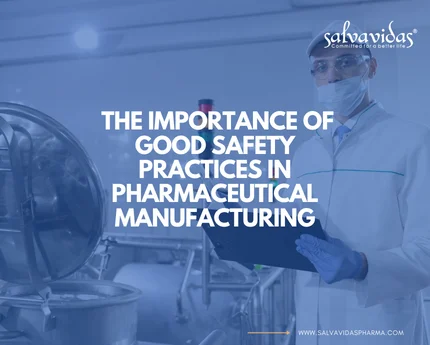
Introduction:
The pharmaceutical industry is responsible for producing life-saving drugs and medications that help millions of people worldwide. However, it’s a complex industry that comes with inherent risks and hazards that can pose serious health and safety concerns for workers and consumers. That’s why the importance of good safety practices in pharmaceutical manufacturing cannot be overstated. In this article, we will explore the significance of implementing good safety practices in pharmaceutical manufacturing, the benefits of doing so, and some of the best practices that can be followed to ensure the safety of all stakeholders involved.
Headings:
- The Risks Involved in Pharmaceutical Manufacturing
- Benefits of Implementing Good Safety Practices in Pharmaceutical Manufacturing
- Best Practices for Ensuring Safety in Pharmaceutical Manufacturing
*The Risks Involved in Pharmaceutical Manufacturing
- Exposure to Harmful Chemicals and Substances
- High-Risk Manufacturing Processes
- Potential Accidents and Injuries
*Benefits of Implementing Good Safety Practices in Pharmaceutical Manufacturing
- Enhanced Workplace Safety
- Improved Quality Control
- Better Reputation and Consumer Confidence
- Regulatory Compliance and Avoiding Penalties
*Best Practices for Ensuring Safety in Pharmaceutical Manufacturing
- Regular Risk Assessments and Safety Audits
- Training and Education for Employees
- Proper Handling and Storage of Chemicals and Substances
- Personal Protective Equipment (PPE)
- Compliance with Regulatory Requirements
- Safety Protocols for Emergencies and Accidents
Bullet Points:
- Good safety practices in pharmaceutical manufacturing can help reduce the risks of accidents, injuries, and illnesses to employees and consumers.
- Implementing good safety practices can also help improve the quality of products, enhance the reputation and consumer confidence, and avoid regulatory penalties.
- Some of the best practices for ensuring safety in pharmaceutical manufacturing include regular risk assessments and safety audits, employee training and education, proper handling, and storage of chemicals and substances, use of personal protective equipment, compliance with regulatory requirements, and safety protocols for emergencies and accidents.
FAQs:
Q. What are the risks involved in pharmaceutical manufacturing?
A. Pharmaceutical manufacturing involves exposure to harmful chemicals and substances, high-risk manufacturing processes, and potential accidents and injuries.
Q. How can implementing good safety practices benefit the pharmaceutical industry?
A. Implementing good safety practices can benefit the industry by improving workplace safety, enhancing the quality of products, building consumer confidence, and avoiding regulatory penalties.
Q. What are some best practices for ensuring safety in pharmaceutical manufacturing?
A. Some best practices for ensuring safety in pharmaceutical manufacturing include regular risk assessments and safety audits, employee training and education, proper handling, and storage of chemicals and substances, use of personal protective equipment, compliance with regulatory requirements, and safety protocols for emergencies and accidents.
Conclusion:
In conclusion, the importance of good safety practices in pharmaceutical manufacturing cannot be overstated. It’s a crucial aspect of the industry that requires careful consideration and implementation to ensure the safety of employees and consumers. By following best practices, regularly assessing and managing risks, and complying with regulatory requirements, pharmaceutical manufacturers can create a safer and healthier workplace and produce high-quality products that can benefit people’s lives.

0